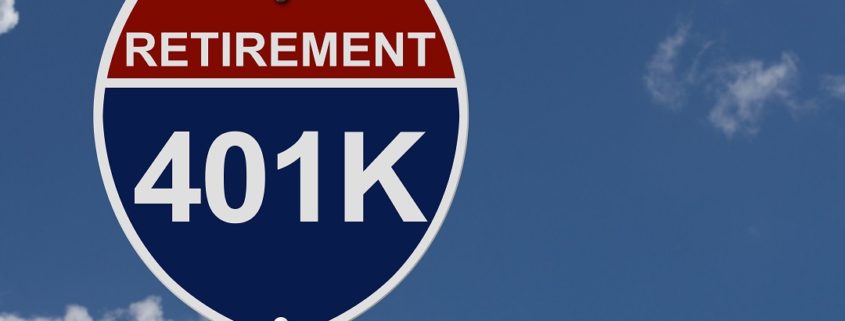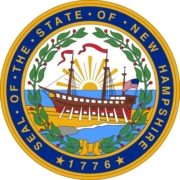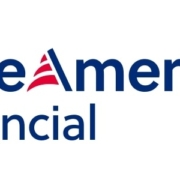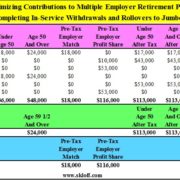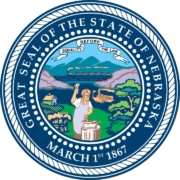401(k) – The Powerful Small, Middle and Large Sized Business Retirement Plan

Money Matters – Skloff Financial Group Question of the Month – July 1, 2015
401(k) – The Powerful Small and Middle Sized Business Retirement Plan
By Aaron Skloff, AIF, CFA, MBA
We own a middle sized business and want to retain our employees by offering a valuable retirement benefit. We read your article on SEP IRAs and SIMPLE IRAs. Is there another flexible retirement plan with generous contribution limits?
A: The Problem — Finding a Flexible Retirement Plan with Generous Contributions Limits for Small, Middle and Large Sized Businesses
A 401(k) retirement plan allows the employer to customize the plan to meet the needs of the employees and the employer. There are a number of customizable features within the plan. Even employees with modest incomes can contribute generously to the plan.
The Solution —401(k)
A 401(k) plan provides self-employed individuals, small, middle and large sized businesses a flexible employer sponsored retirement plan with generous contributions limits.
Are You Interested in Learning More?
Who Can Establish a 401(k) and Who Can Contribute. It can be established by sole proprietors, partnerships, C corporations and S corporations. The business can be privately or public owned. Even if employees are also employees of another company or university where they participate in their retirement plan (e.g.: SEP IRA, SIMPLE IRA, 401(k), 403(b) and/or 457(b)), they can also participate in a 401(k). Contributions can be made by employees and employers.
Contribution Limits. Employees can contribute up to 100% of their salary, up to $18,000 per year ($24,000 if age 50 or over). Employers may make a matching contribution or profit sharing contribution up to 25% of compensation up to a maximum of $53,000. Total employer plus employee contributions cannot exceed $53,000.
Vesting. With many employer sponsored retirement plans employer contributions can be taken back by the employer if employees do not remain employed by the employer for a certain number of years. After remaining with the employer for a number of years (five years as an example) employees can keep the employer’s contributions whether or not they stay with the employer. The process of being able to keep employer contributions over time is called vesting. A 401(k) plan is flexible and can be customized to meet the employees’ and employer’s needs. Plan rules are determined by the employer and documented in a plan document. Employee contributions vest immediately. Safe Harbor 401(k) plan (see below) employer contributions vest immediately. Voluntary employer profit sharing contributions must vest within six years.
Establishment Deadline. The deadline to establish a 401(k) plan for 2015 is December 31, 2015. The deadline to establish a Safe Harbor 401(k) plan for 2015 is October 1, 2015.
Withdrawals. Unlike SEP IRAs and SIMPLE IRAs, loans are may be available if the 401(k) plan permits them. Hardship withdrawals may be available, but a 10% penalty may apply if you are under age 59½. Withdrawals can be taken upon a “trigger” event such as turning age 59½, a disability, termination of employment, or plan termination. Some plans may offer an “in-service withdrawal” that allows employees to make non-hardship withdrawals while still working. 401(k) plans are subject to required minimum distributions (RMDs) starting at age 70 ½, unless an employee is still working as an employee for the employer of the 401(k) plan.
Tax Filing and Testing. Form 5500 and special IRS testing is required on an annual basis to ensure the 401(k) plan does not favor key employees. A key employee is: an officer making over $170,000 in 2015, a 5% owner of the business (a 5% owner is someone who owns more than 5% of the business), or an employee owning more than 1% of the business and making over $150,000 for the plan year. A plan is considered to have favored key employees if key employees’ account values are more than 60% of the value of the plan’s assets. Employers can avoid this potential issue by establishing a Safe Harbor 401(k). The most common Safe Harbor 401(k) plan document states that that the plan will either match employee contributions up to 4% of compensation or the plan will contribute 3% of employee’s compensation.
Tax Domino Effect. Contributions to a 401(k) plan reduce your adjusted gross income (AGI). This can have a positive domino effect, avoiding or reducing: capital gains and dividend taxes, net investment income taxes and itemized deductions and personal exemptions phaseouts (PEP).
Action Step — Establish a 401(k) Plan
Offering a 401(k) retirement plan allows employees and business owners to boost their retirement savings and gain tax benefits as you close your retirement savings gap. Don’t put off until tomorrow what you can do today.
Aaron Skloff, Accredited Investment Fiduciary (AIF), Chartered Financial Analyst (CFA), Master of Business Administration (MBA) is CEO of Skloff Financial Group, a Registered Investment Advisory firm specializing in financial planning, investment management and benefits for small to middle sized companies. He can be contacted at www.skloff.com or 908-464-3060.

